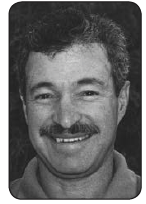Sponsored By


For years, I had kept my fingers crossed that someday, there would be a technology that allowed cataract surgeons to be as accurate in reducing preexisting cylinder intraoperatively as well as we are at reducing the sphere. Astigmatic keratotomy (AK), a technique I introduced combined with cataract surgery in the early 1980s, is an adequate method of cylinder correction; however, the refractive results are largely dependent on the availability of a precise technology to create the incision at the proper depth, on the incisional technique itself, and on the wound healing pattern.
AK was the first step toward that goal of correcting preexisting cylinder during cataract surgery, but by no means had we reached the ultimate goal. In 1994, Kimiya Shimizu, MD, PhD, introduced the concept of the toric lens, and, more recently, Douglas D. Koch, MD, discovered that posterior corneal astigmatism contributes to preexisting astigmatism. Yet even with advances in technology and technique, the penetration rate of toric IOLs has remained dismally low at about 7% to 8% in the United States and about 10% globally (data on file with Alcon).
A GREAT POSITION
We are now in a great position to make the toric IOL a standard of care in preexisting astigmatism correction, and there are many reasons that all cataract surgeons should be using them. First, patients are typically happy after cataract surgery, they are happier when their sphere is corrected, and they are happiest when their cylinder is reduced. Second, toric IOLs promote the practice of refractive cataract surgery—something that every cataract surgeon should be striving for. Third, toric IOLs provide an additional revenue stream, which, in our time of decreased reimbursement, can be extremely helpful.
One major deterrent to the adoption of toric IOLs, however, is the availability of a technology to precisely plan treatments and aid in lens alignment. Years ago, I developed a tool called iris fingerprinting, in which the surgeon can use iris landmarks to identify the target meridian in order to facilitate the precise alignment of a toric IOL. This low-cost technology has been an integral component in my success with toric IOLs.
In addition to iris fingerprinting, I also now rely on the" is missing in front of "CALLISTO eye (Carl Zeiss Meditec), which is one technology included in the ZEISS Cataract Suite. In my opinion, CALLISTO eye is one of the most profound, dramatic changes in astigmatism management because it aligns toric lenses so consistently, simply, effortlessly, and accurately. Furthermore, the information provided by CALLISTO eye is seamlessly collected from the IOLMaster 700 (Carl Zeiss Meditec), then transitioned to a monitor or the surgical microscope in the operating room.
—
Tweet this
STRENGTHENING CONFIDENCE
The CALLISTO eye can strengthen the surgeon’s confidence that the data required of toric IOL implantation has been accurately measured, analyzed, and interpreted. Although it is an expensive technology that represents a significant financial investment, surgeons must invest in technology in order to deliver the best outcomes for patients. I know other highly respected surgeons who use CALLISTO eye, and every single one of them feels like it is one of the best investments they have made in their entire career. I think that CALLISTO eye is a phenomenal technology that crafts toric IOLs to become the standard of care—something that is long overdue.
The statements of the healthcare professionals giving this presentation reflect only their personal opinions and experiences and do not necessarily reflect the opinions of any institution with whom they are affiliated.
The healthcare professionals giving the presentation may have a contractual relationship with Carl Zeiss Meditec, Inc., and may have received financial compensation.
